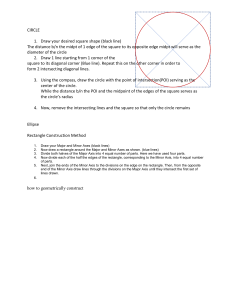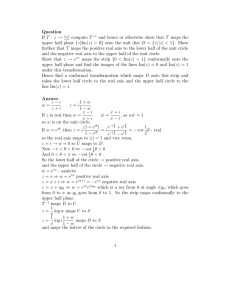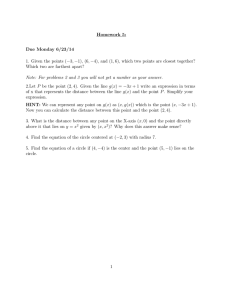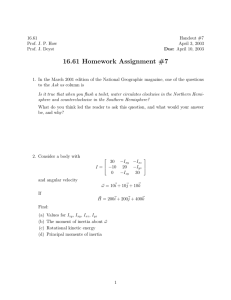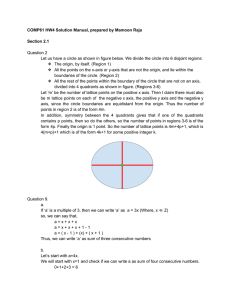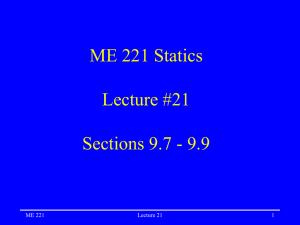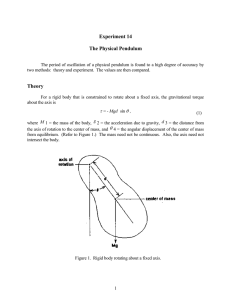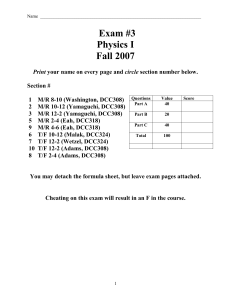PH 314 Hour Exam May 19, 2005 107 points
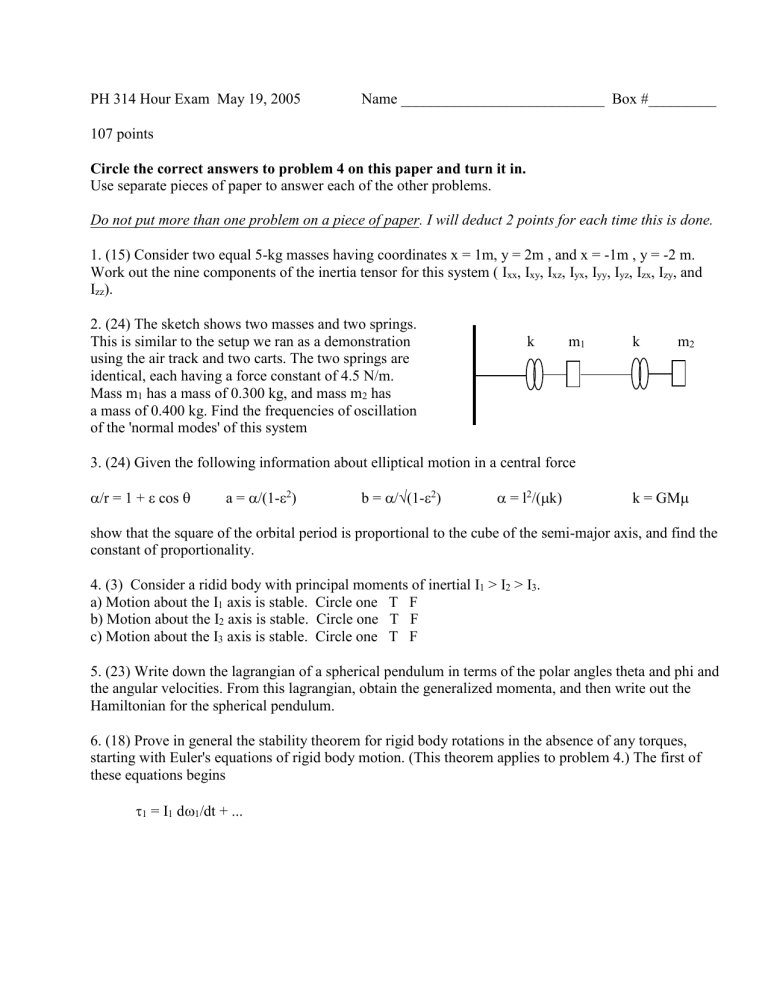
PH 314 Hour Exam May 19, 2005
107 points
Name ___________________________ Box #_________
Circle the correct answers to problem 4 on this paper and turn it in.
Use separate pieces of paper to answer each of the other problems.
Do not put more than one problem on a piece of paper. I will deduct 2 points for each time this is done.
1. (15) Consider two equal 5-kg masses having coordinates x = 1m, y = 2m , and x = -1m , y = -2 m.
Work out the nine components of the inertia tensor for this system ( I xx
, I xy
, I xz
, I yx
, I yy
, I yz
, I zx
, I zy
, and
I zz
).
2. (24) The sketch shows two masses and two springs.
This is similar to the setup we ran as a demonstration using the air track and two carts. The two springs are identical, each having a force constant of 4.5 N/m.
Mass m
1
has a mass of 0.300 kg, and mass m
2
has
k m
1 k m
2 a mass of 0.400 kg. Find the frequencies of oscillation of the 'normal modes' of this system
3. (24) Given the following information about elliptical motion in a central force
/r = 1 +
cos
a =
/(1-
2
) b =
/
(1-
2
)
= l
2
/(
k) k = GM
show that the square of the orbital period is proportional to the cube of the semi-major axis, and find the constant of proportionality.
4. (3) Consider a ridid body with principal moments of inertial I
1
> I
2
> I
3
. a) Motion about the I
1
axis is stable. Circle one T F b) Motion about the I
2
axis is stable. Circle one T F c) Motion about the I
3
axis is stable. Circle one T F
5. (23) Write down the lagrangian of a spherical pendulum in terms of the polar angles theta and phi and the angular velocities. From this lagrangian, obtain the generalized momenta, and then write out the
Hamiltonian for the spherical pendulum.
6. (18) Prove in general the stability theorem for rigid body rotations in the absence of any torques, starting with Euler's equations of rigid body motion. (This theorem applies to problem 4.) The first of these equations begins
1
= I
1
d
1
/dt + ...


